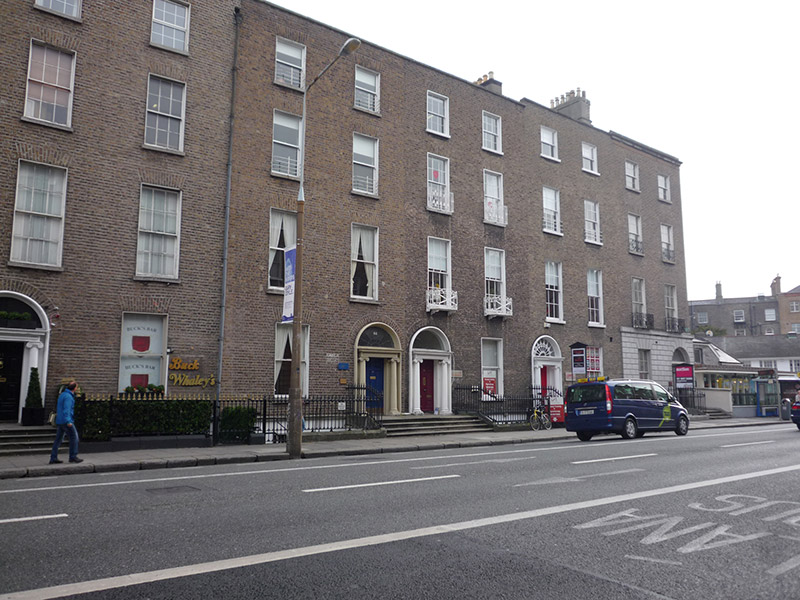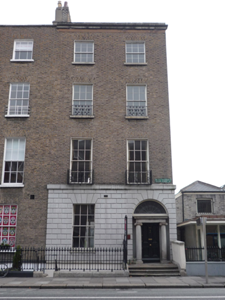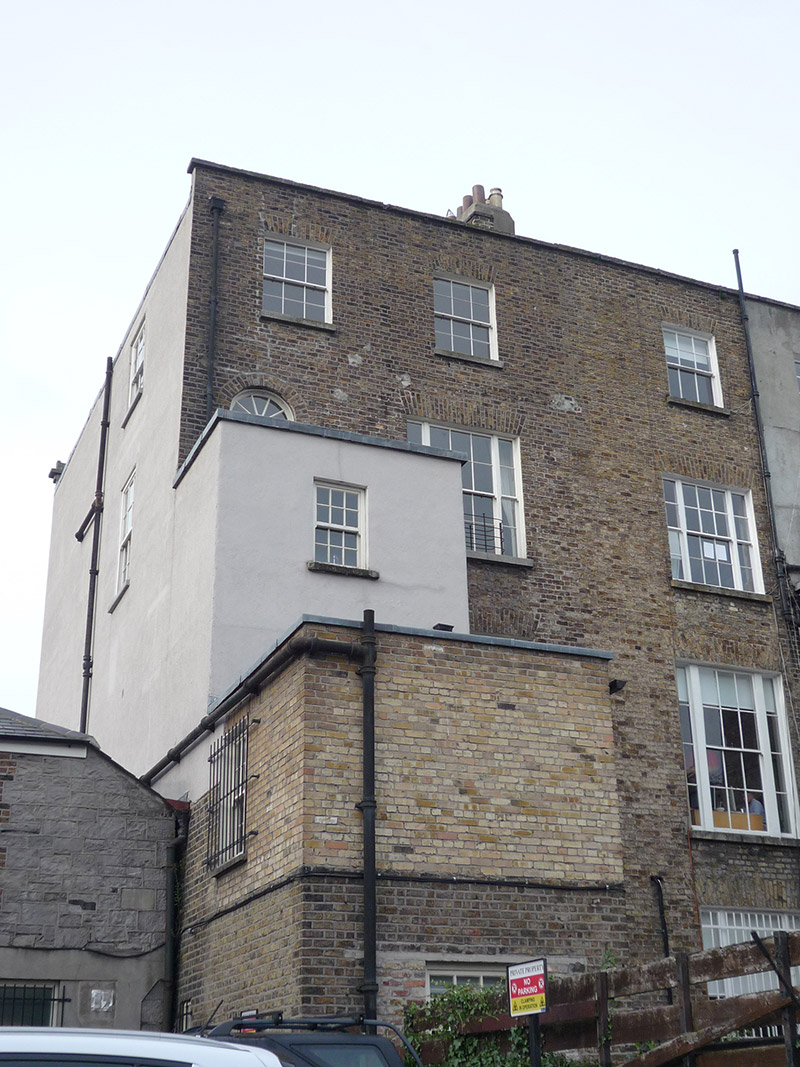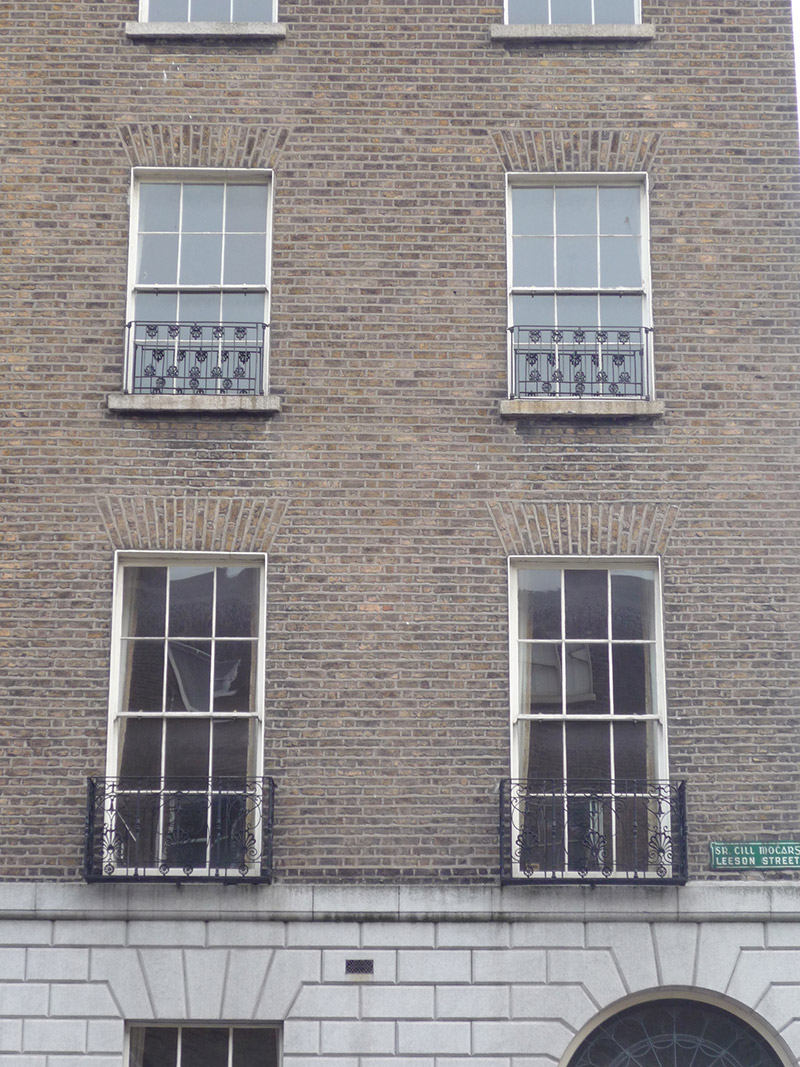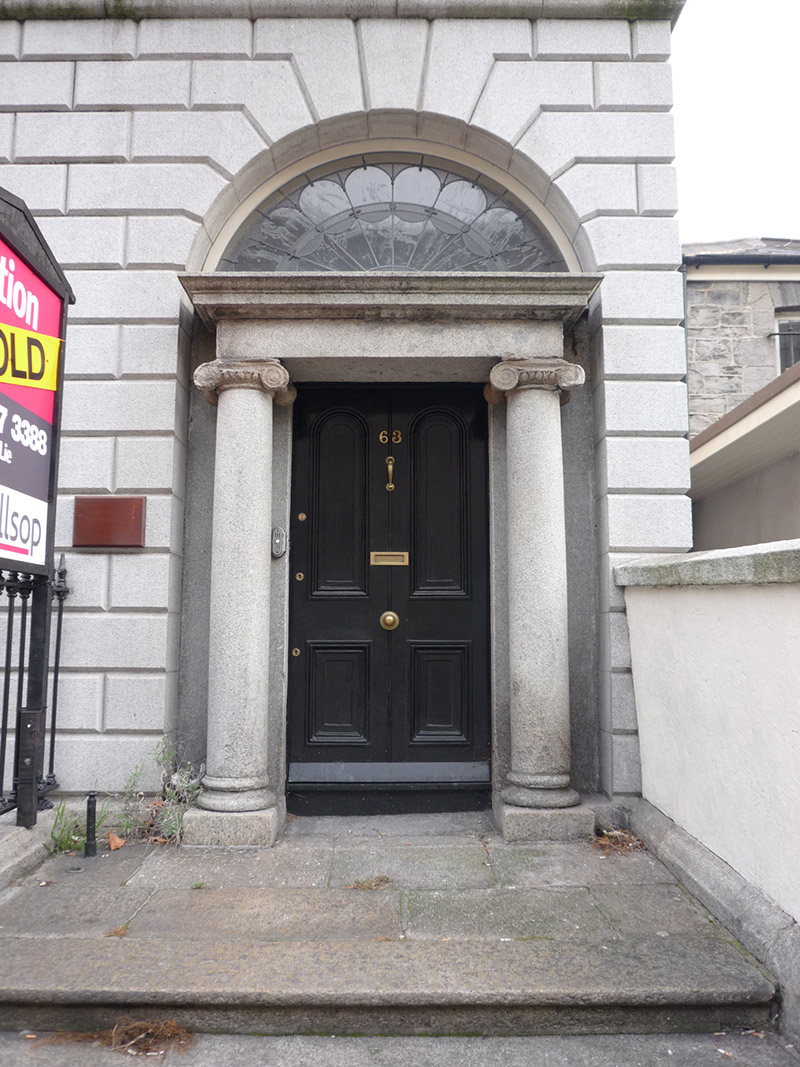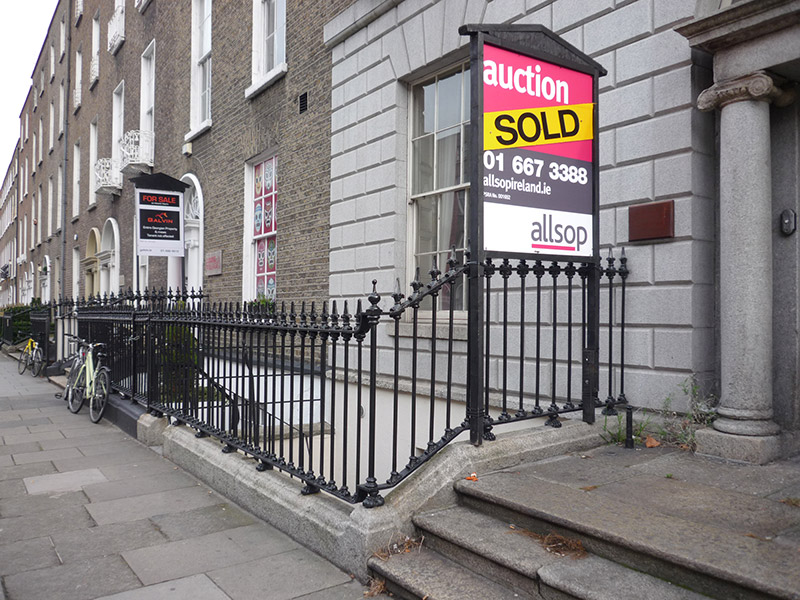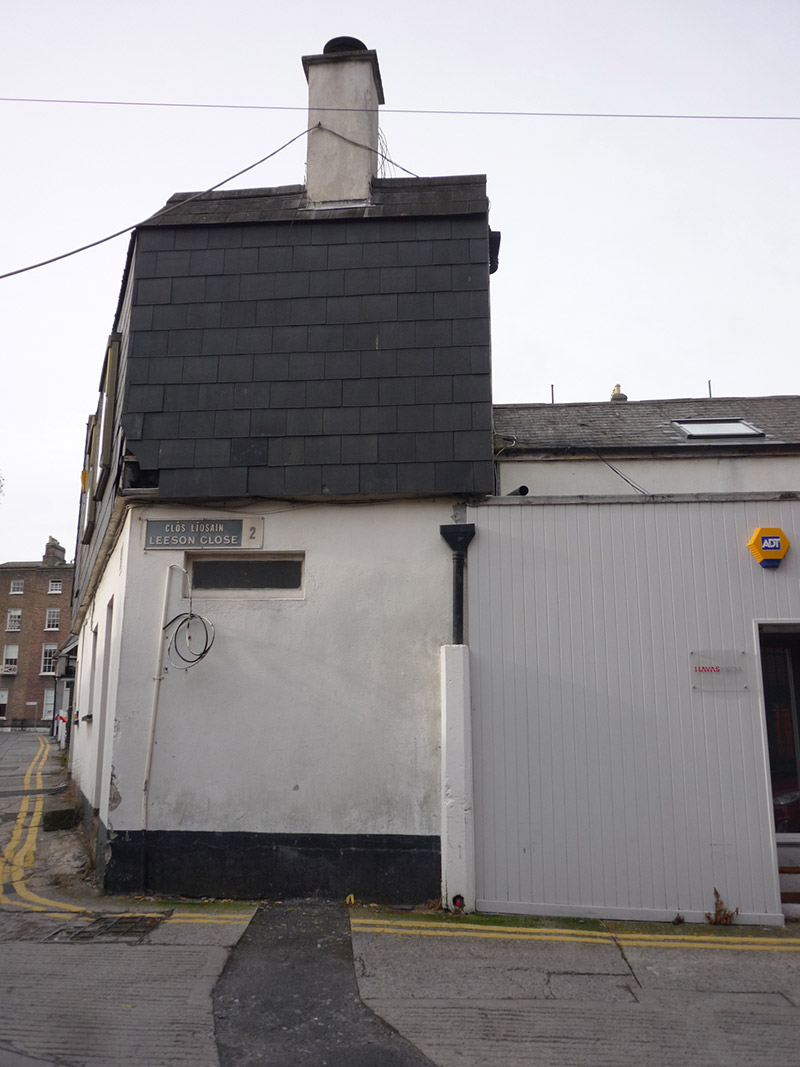Survey Data
Reg No
50930259
Rating
Regional
Categories of Special Interest
Architectural, Artistic
Original Use
House
Historical Use
Office
Date
1820 - 1840
Coordinates
316361, 232877
Date Recorded
20/10/2015
Date Updated
--/--/--
Description
End-of-terrace two-bay four-storey over basement former townhouse, built c. 1830, with two-stage flat-roofed return to rear (north) elevation. Converted into offices but currently vacant. M-profile roof, hipped to east, concealed by brick parapet with granite cornice and blocking course over south elevation. Brick chimneystacks to west party wall with replacement clay pots. Parapet gutters with replacement hopper and cast-iron downpipe to east side of rear (north). Brown brick walling laid in Flemish bond, rusticated granite walling to ground floor with granite plinth course over rendered basement walls. Brick walling laid to English garden wall bond to lower stage of return, rendered walling to upper stage and to eastern elevation of main building. Square-headed window openings with brick voussoirs, rendered reveals and granite sills, round-headed opening to rear elevation, over return. Plain rendered surrounds to basement and east elevation. Decorative cast-iron balconettes to first and second floor openings, steel grille to basement, wrought-iron guard rails to second floor of north (rear) elevation. Largely six-over-six sliding timber sash windows with convex horns, three-over-three to third floor (south). Some Wyatt-style windows to rear (north) and recent multi-paned timber sashes to return and eastern elevation. Round-headed door opening to principal elevation (south) with rusticated granite surrounds and voussoirs, recessed doorcase having sandstone prostyle Ionic portico with moulded cornice and frieze over Ionic columns, petal fanlight (appears replacement) and timber door with beaded-muntin and round-headed panels. Granite entrance platform with cast-iron boot scraper, approached by four nosed granite steps, flanked by rendered wall with granite coping and plinth to east, iron railings with decorative cast-iron finials and corner posts over granite plinth enclosing basement area. Concrete steps to basement with replacement timber door beneath entrance platform. Enclosed yard to rear. Modernised mews building to north on Leeson Close.
Appraisal
Despite the loss of some historic fabric, this former townhouse forms part of a relatively intact terraced row. Nos. 63-9 (50930253-9), likely built by Thomas Dockerell, proceeded those to the west Nos. 71-76, (5093046-51) and are subsequently grander in scale, defined by higher floor levels and larger window openings. (Casey, 2005) Although the street is largely characterised by typical late-Georgian townhouses, the variations in detailing, proportions and scale are indicative of the speculative nature of development. The main route from St. Stephen’s Green to Donnybrook, Leeson Street remained largely undeveloped until the late-eighteenth century and was almost entirely complete by 1836.
